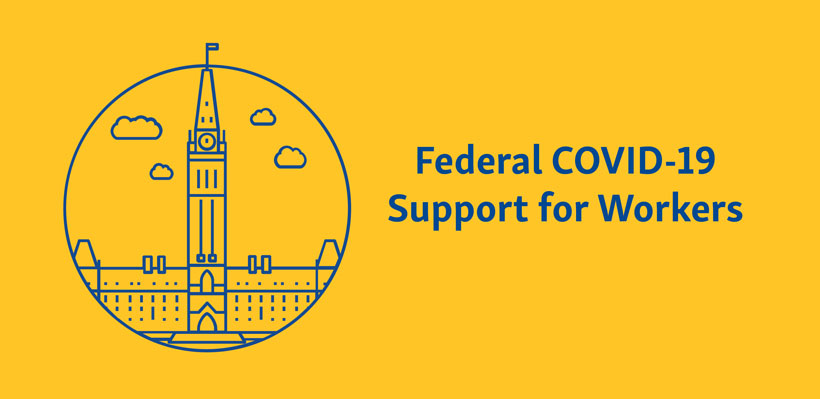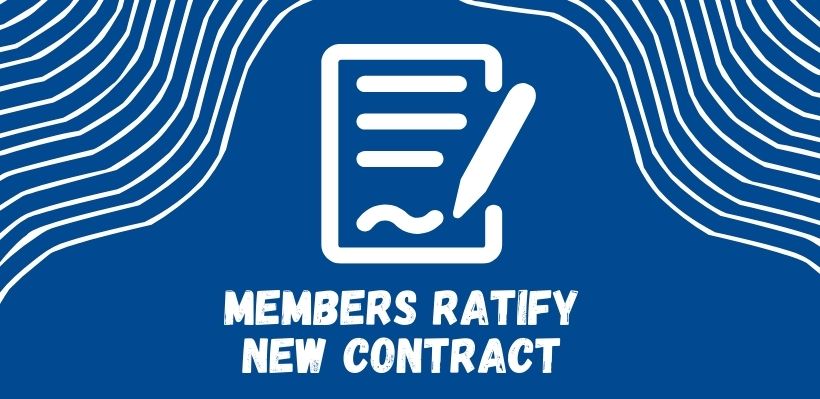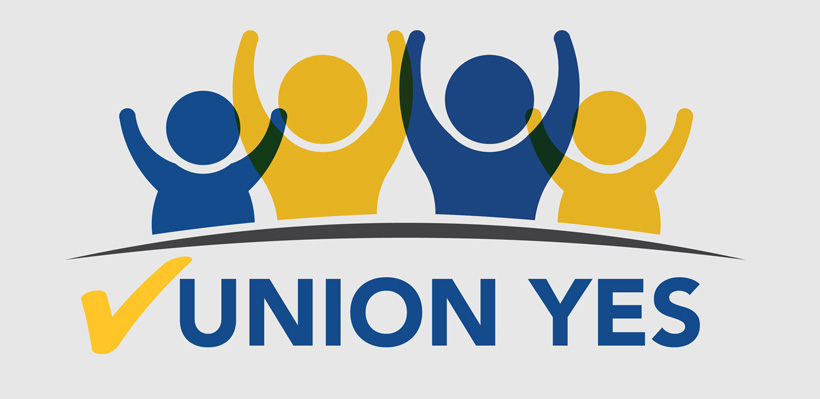
Your union has created this resource to help our members develop a better understanding of the programs available to help all Canadians during the COVID-19 crisis.
The below FAQ is based on a summary of information available as of April 1, 2020. Please ensure you frequently check the Government of Canada website for more comprehensive details.
What is the Canada Emergency Response Benefit (CERB)?
CERB is a new benefit provided by the federal government, in response to the devastating impact of COVID-19 on Canadians and their families. It provides $2,000 a month for up to 4 months if you meet eligibility requirements.
What are the eligibility requirements for CERB and would I qualify?
To receive the CERB, you have to be a Canadian resident and qualify under one of the following categories:
- If you had to stop working due to COVID19 and do not have access to paid leave or other income support.
- If you are sick, quarantined, or taking care of someone who is sick with COVID-19.
- If you are a working parent who must stay home without pay to care for children that are sick or need additional care because of school and daycare closures.
- Workers who still have their employment but are not being paid because there is currently not sufficient work and their employer has asked them not to come to work.
- This benefit applies to wage earners and self-employed individuals, including contract workers, who would not otherwise be eligible for Employment Insurance.
In addition, you also must have earned at least $5,000 from employment, self-employment, EI maternity and/or parental benefits in 2019 or in the 12 months prior to submitting your application.
AND
You also must have been without income for at least 14 consecutive days in a four-week period because of the impacts of COVID-19.
When and how can I apply for CERB?
You can apply for CERB through the Government of Canada website on April 6. You can also apply at that time through an automated telephone line or via a toll-free number. Watch the Government of Canada website for more details. Applicants can register online with the Government of Canada and select direct deposit to receive payment within three to five days. By mail, approved applicants will get their cheque within 10 days.
How long is CERB available for?
Currently, the payments will be made for the period from March 15 (retroactive) to Oct 3, 2020.
What is Employment Insurance (EI) and do I qualify?
EI provides regular benefits to individuals who lose their jobs through no fault of their own, including shortage of work, seasonal or mass layoffs. EI is for those who are available and able to work but can't find a job. To ensure you can receive your benefits in a timely manner, ensure you send in your applications as soon as possible. EI is calculated at 55% of insured earnings over the last year.
Ensure you ask your employer for your Record of Employment.
To qualify for EI, the Government of Canada notes you must meet the following eligibility requirements:
- You were employed in insurable employment;
- You lost your job through no fault of your own;
- You have been without work and without pay for at least seven consecutive days in the last 52 weeks;
- You have worked for the required number of insurable employment hours in the last 52 weeks or since the start of your last EI claim, whichever is shorter;
- You are ready, willing and capable of working each day;
- You are actively looking for work (you must keep a written record of employers you contact, including when you contacted them).
Regular EI also involves having worked specified insurable employment hours in the last 52 weeks, which will depend on your individual situation. For more, visit the Government of Canada website.
What are EI sickness benefits?
EI sickness benefits provide up to 15 weeks of income replacement and is available to eligible claimants who are unable to work because of illness, injury or quarantine. You could receive up to 55% of your earnings up to a maximum of $573 a week.
Make sure to ask your employer for your Record of Employment, which you will need to apply.
In addition, the one-week waiting period for EI sickness benefits is waived for those quarantined due to COVID-19.
No medical certificate required for EI sickness benefits as related to COVID-19.
You also have to have worked a minimum of 600 insured hours in last 52 weeks before the claim or since your last EI claim.
For more on EI Sickness Benefits, visit the Government of Canada website.
I have already applied for EI, do I have to apply for CERB again?
If you have already applied for EI and your application has not yet been processed, you would not need to apply to the CERB. If you haven't applied for EI, you can apply to CERB on April 6.
On April 1, Prime Minister Justin Trudeau said:
"Starting April 6, you will be able to apply for the Canada Emergency Response Benefit (CERB). A reminder, if you are getting the wage subsidy from your employer, you can’t collect the CERB. It’s one or the other. You can’t get both of these benefits. For the CERB, you can register online at Canada.ca. By selecting direct deposit, you should receive your payment within three to five days. If you can’t apply online, don’t worry. You can call the Canada Revenue Agency for help over the phone. By mail, you’ll get your cheque within 10 days.
After applying, all you need to do to keep getting this benefit is check in every month to say that you are still out of work. And if you have already applied through EI, you’re all set up. You don’t need to do anything on April 6. We’re putting measures in place so we don’t overload the system but I can assure you that everyone will get their money."
What works better for me, CERB or EI?
Canadians who have already applied for EI and whose application has not yet been processed would not need to reapply to the CERB.
EI pays up to a maximum of $573 per week. If you are making more than $54,200 a year and you qualify for EI, you will get more money if you apply for EI.
If you are making less, you will have to do the calculations on what works best for you.
The maximum you can get from regular EI is $573 per week. This figure is based on maximum yearly insurable earnings, which the Government of Canada had set at $54,200 as of January 2020 ($54,200/52 weeks = $573/week).
David Macdonald, senior economist at the Canadian Centre for Policy Alternatives, estimated in the Globe and Mail that four out of five workers will be better off under the CERB than under EI.
“The CERB would replace 82 per cent of the lost income of a minimum-wage employee in Ontario working a 40-hour week. EI benefits would replace just 55 per cent of employment income.”
If you are making less than $47,272, CERB may work better for you. If you are working part-time, or in industries like hospitality and retail, CERB is intended to help workers like you. You can go to the Government of Canada website to calculate what works best for you.
For those earning close to minimum wage, the CERB is the better option.
I am already receiving EI, what should I do about CERB?
If you are already receiving EI, you will continue to receive your EI payments. If your EI benefits run out before October 3, you would be able to apply for CERB if you are still unable to return to work because of COVID-19.
Click here to read Global News report about the Canada Emergency Response Benefit.
What is the difference between the two programs?
CERB ensures if you are still employed but not working or paid, you still can receive benefits.
While EI is connected to your previous record of employment, all CERB recipients are provided with $2,000 a month.
Where do I apply?
You can apply on the Government of Canada website.
CERB: https://www.canada.ca/en/department-finance/economic-response-plan.html
EI: https://www.canada.ca/en/services/benefits/ei/ei-regular-benefit/apply.html
How does this affect members who work part-time?
Workers may be eligible if they stopped working because of COVID-19.
The Government of Canada notes: "When submitting your first claim, you cannot have earned more than $1,000 in employment and/or self-employment income for a period of at least 14 or more consecutive days within the four-week benefit period of your claim. When submitting subsequent claims, you cannot have earned more than $1,000 in employment and/or self-employment income for the entire four-week benefit period of your new claim."
l am a student – what are my options?
The federal government is providing the Canada Emergency Student Benefit, which will provide $1,250 a month to eligible students and $2000 a month to students who have a disability or are taking care of someone else.
Check for more details as they become available on the Government of Canada website.
Additional Resources
Government of Canada: Canada Revenue Agency – Set Up Your Account for Quicker Payment
UFCW Canada: Resource for Workers
Carleton University: Professor Jennifer Robson's Guide for Workers & Coverage
This information contained in this Q & A is intended as a guide. For the best guidance on your specific situation, please ensure to speak to a Service Canada representative.










